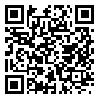Volume 28 - Supplementary
IBJ 2024, 28 - Supplementary: 418-418 |
Back to browse issues page
Download citation:
BibTeX | RIS | EndNote | Medlars | ProCite | Reference Manager | RefWorks
Send citation to:



BibTeX | RIS | EndNote | Medlars | ProCite | Reference Manager | RefWorks
Send citation to:
Khakestari N, Shafiei S H, Jodeiri A. Leveraging Unlabeled Radiographs through Self-Supervision for Improved Acetabular Version Estimation from Limited Labeled Data. IBJ 2024; 28 :418-418
URL: http://ibj.pasteur.ac.ir/article-1-4855-en.html
URL: http://ibj.pasteur.ac.ir/article-1-4855-en.html
Abstract:
Introduction: The acetabular version, a critical factor for total hip arthroplasty planning, is traditionally measured from computed tomography (CT) scans as the gold standard, but the substantial radiation exposure and financial cost make anterior-posterior (AP) pelvic radiographs an appealing alternative. However, manually quantifying versions from radiographs is laborious and error-prone for clinicians. Deep learning methodologies offer an automated solution, but their performance is constrained by the paucity of large, annotated datasets, which are resource-intensive to acquire for medical imaging applications. In this work, we propose a novel self-supervised pre-training approach to learn effective representations from unlabeled pelvic radiographs to facilitate accurate acetabular version estimation using limited labeled data.
Methods and Materials: Our dataset comprised 2848 pelvic radiographs from Sina Hospital, Tehran, Iran, including 624 unlabeled and 300 labeled with corresponding CT scans. An orthopedic surgeon estimated the acetabular version bilaterally using CT as the reference standard. In the data preprocessing phase, the pelvic radiographs were cut in half and divided into left and right sides, resulting in a larger dataset. A self-supervised pre-training approach was employed where the model was trained on a pretext task of predicting whether or not two randomly selected half-images from pelvic radiographs belonged to the same patient. The pre-trained weights were then transferred and fine-tuned on the labeled subset to estimate the acetabular version from radiographs, leveraging the learned representations to mitigate reliance on large labeled datasets.
Results: To evaluate our self-supervised pre-training methodology, we compared our method performance against EfficientNet models initialized with ImageNet weights and without pre-training. Our proposed approach achieved a notable reduction in mean absolute error (MAE), improving from 3.9769° to 3.5036° compared to the ImageNet-initialized baseline and from 4.3377° to 3.5036° against the model without pre-trained weights. These MAE reductions demonstrate our approach's superior performance in accurately estimating the acetabular version from anterior-posterior radiographs.
Conclusion and Discussion: We demonstrate the efficacy of our self-supervised pre-training approach in estimating the acetabular version from limited labeled radiographic data by leveraging representations learned from abundant unlabeled samples. This methodology circumvents the need for extensive manual annotations, a bottleneck in medical imaging, while outperforming conventional transfer learning strategies. Our findings highlight the potential of self-supervised learning to enhance model performance when labeled data is scarce.

Methods and Materials: Our dataset comprised 2848 pelvic radiographs from Sina Hospital, Tehran, Iran, including 624 unlabeled and 300 labeled with corresponding CT scans. An orthopedic surgeon estimated the acetabular version bilaterally using CT as the reference standard. In the data preprocessing phase, the pelvic radiographs were cut in half and divided into left and right sides, resulting in a larger dataset. A self-supervised pre-training approach was employed where the model was trained on a pretext task of predicting whether or not two randomly selected half-images from pelvic radiographs belonged to the same patient. The pre-trained weights were then transferred and fine-tuned on the labeled subset to estimate the acetabular version from radiographs, leveraging the learned representations to mitigate reliance on large labeled datasets.
Results: To evaluate our self-supervised pre-training methodology, we compared our method performance against EfficientNet models initialized with ImageNet weights and without pre-training. Our proposed approach achieved a notable reduction in mean absolute error (MAE), improving from 3.9769° to 3.5036° compared to the ImageNet-initialized baseline and from 4.3377° to 3.5036° against the model without pre-trained weights. These MAE reductions demonstrate our approach's superior performance in accurately estimating the acetabular version from anterior-posterior radiographs.
Conclusion and Discussion: We demonstrate the efficacy of our self-supervised pre-training approach in estimating the acetabular version from limited labeled radiographic data by leveraging representations learned from abundant unlabeled samples. This methodology circumvents the need for extensive manual annotations, a bottleneck in medical imaging, while outperforming conventional transfer learning strategies. Our findings highlight the potential of self-supervised learning to enhance model performance when labeled data is scarce.

| Rights and permissions | |
 |
This work is licensed under a Creative Commons Attribution-NonCommercial 4.0 International License. |







.png)
